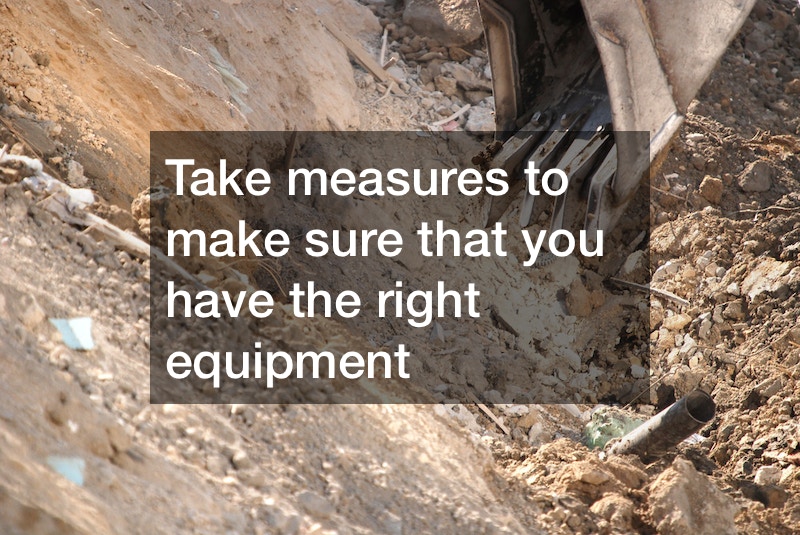If You’re Going to Be Handling Excavations, You’ll Need to Know About Shoring


If you own an excavation company, you have to take measures to make sure that you have the right equipment. This can help you to keep your workflow efficient and also give your employees a safer environment. Whether you deal with detail excavation, detailed excavation, or any other kind of excavation, it’s a great idea for you to know the proper excavation names so that you can keep up with the necessary maintenance of your equipment.
You may also want to do an excavation toolbox talk to make sure that you’re familiar with various terms and words that you may come across. With the industry developing at a constant rate, it’s important to make sure that you’re familiar with new technologies as they get discovered. This will make it easier for you to stay knowledgeable about everything to do with your industry.

Finally, remember that it’s a good idea to stay informed of the necessary maintenance that your equipment needs. This can go a long way toward enabling you to get the best ones and also keep them in good shape. Doing this can enable you to get the most out of your equipment and only make replacements when you need to.

The Occupational Safety and Health Administration (OSHA) website categorizes excavation as one of the most potentially hazardous construction jobs. To counteract these concerns, OSHA has clear construction propping system requirements detailing soil type in relation to shoring and propping equipment.
Types of Shoring For Excavation: How to Keep Workers Safe.
A construction propping system will be required for nearly all excavation operations. The main concern is the safety of the workers involved. Determining the right shoring equipment for each job comes down to understanding the classification of soil and the depth of the excavation.
When is Construction Propping Equipment Required on a Job?
OSHA defines an excavation as a man-made trench, depression, or cut in which soil was removed. Specifically, an excavation qualifies as a trench if it is no wider than 15 feet, and deeper than it is wide. Any trench that exceeds a depth of five feet is required by OSHA to install an appropriate shoring system, unless the trench is made entirely out of rock. In fact, trenches that exceed 20 feet in depth need to have their construction propping system reviewed by a registered professional engineer.
What Types of Soil Classification Are There, And What Trouble Might Occur?
There are five basic categorizations for soil. Solid rock is its own category, and as mentioned above, does not require shoring. Then there are the three types:
Type A:
Type B:
Type C:
Layered Geological Strata.
Excavation Shoring Methods Are Based on Both Soil Classification and Type Of Trench.
Construction propping systems vary in support. Choosing the wrong option could be potentially fatal. Some types of shoring, such as hydraulic shoring, are light weight enough that they can be installed by one person. Other methods, such as pneumatic shoring, require special equipment such as an air compressor to be on sight for installation. No matter which type is chosen, the shoring must be inspected before work begins each day and at the end of shift to ensure the support system hasn’t shifted, nor has the excavation begun to cave. Fissures and cracks in the sides of the trench are also a serious concern that must be monitored.
Shoring is an absolute requirement for those excavation trenches that measure a depth of more than five feet. The safety of the construction workers is paramount.